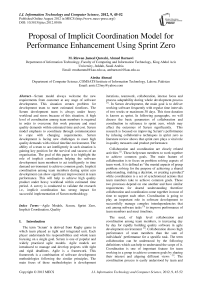Proposal of Implicit Coordination Model for Performance Enhancement Using Sprint Zero
Автор: M. Rizwan Jameel Qureshi, Ahmed Barnawi, Aiesha Ahmad
Журнал: International Journal of Information Technology and Computer Science(IJITCS) @ijitcs
Статья в выпуске: 9 Vol. 4, 2012 года.
Бесплатный доступ
Scrum model always welcome the new requirements from customer at any stage of software development. This situation creates problem for development team to meet estimated timelines. The Scrum development team is always under heavy workload and stress because of this situation. A high level of coordination among team members is required in order to overcome this work pressure and meet quality demands within estimated time and cost. Scrum model emphasis to coordinate through communication to cope with changing requirements. Scrum development is facing new challenges to meet high quality demands with critical timeline environment. The ability of a team to act intelligently in such situation is gaining key position for the survival and success of an organization. The goal of this paper is to highlight the role of implicit coordination helping the software development team members to act intelligently in time demand environment to achieve common goals. Implicit coordination among team members during sprint zero development can show significant improvement in team performance. This will help to achieve high quality product under heavy workload within estimated time period. A survey is conducted to validate the research i.e., implicit coordination has strong impact for successful implementation of Scrum methodology.
Agile Models, Scrum, Sprint Zero, Implicit Coordination, Quality
Короткий адрес: https://sciup.org/15011759
IDR: 15011759
Текст научной статьи Proposal of Implicit Coordination Model for Performance Enhancement Using Sprint Zero
Published Online August 2012 in MECS
The term ‘Scrum’ is derived from Rugby game in which team played as tight and integrated unit. Each player understands his responsibilities and whole team focusing on a single goal. Scrum is one of popular and widely practiced agile models. Agile models are introduced to manage and develop projects with tight and rigid deadlines. Agile is a framework. This framework is a combination of software development methodologies following the similar principles. The main focus of these methodologies is development iterations, teamwork, collaboration, intense focus and process adaptability during whole development process [1]. In Scrum development, the main goal is to deliver working software frequently with regular time intervals of two weeks or maximum 30 days. This time duration is known as sprint. In following paragraphs, we will discuss the basic parameters of collaboration and coordination in reference to sprint zero, which may affect the outcomes of Scrum significantly. This research is focused on improving Scrum’s performance by infusing collaborative techniques in sprint zero as literature review shows that sprint zero plays a vital role in quality measures and product performance.
Collaboration and coordination are closely related activities [2]. These help team members to work together to achieve common goals. The main feature of collaboration is to focus on problem solving aspects of team work. It is defined as “the mental aspects of group problem solving for the purpose of achieving a shared understanding, making a decision, or creating a product” while coordination is a set of synchronized actions that team members take to achieve common goals. These two processes depend on one another and have similar requirements for shared understanding therefore collaboration and coordination come together in most of time to support each other. Coordination is going to play an important role in software development to successfully manage complex interdependencies that exit among software tasks [3] to improve performance of team members and meet timelines.
The need, of high level collaboration and coordination among team members, is increasing day by day for rapidly building quality software in agile development environment [4]. Collaboration shows high performance of team members than the sum of individuals’ performance for a specific task. The term collaboration can be understood by the following definitions which can help to understand the scope of it. Coordination is one of important feature for team working in a group to achieve common goals by sharing their interest and aligning different views [5]. The coordination process is easily understood by team and task coordination and by explicit and implicit coordination. There are two type of coordination.
-
• Explicit Coordination
-
• Implicit Coordination
Explicit coordination consists of direct communication and verbal planning [6]. The effective use of implicit coordination by a group is done only when that group successfully passed through an explicit coordination mechanism [7]. In implicit coordination, team members act or share information without being negotiation [8]. Less communication include in implicit coordination [9] which helps to save time and do work properly in time demand environment. It takes less time and resources than explicit coordination [9]. Implicit coordination based on work-group structure, expectations without being negotiation and shard mental models of the tasks. These shard mental models are according to tasks which are going to accomplish [10].
Implicit coordination can be influenced by the group communication and characteristics of the task that is being done [5]. It can play an important role in crisis situation such as to meet objectives in critical time line scenario and to handle unexpected situation to meet quality of the product. In such situations team members will tend to narrow their focus on their tasks because of higher cognitive demand under high work pressure [8]. Sometimes this situation can result for any team member that he missed some important events regarding that situation. This is handled by coordination and collaboration among team members working together and act as collective whole [8] and that time team will shift from explicit coordination to implicit coordination [11].
The ability to act intelligently to meet customer demands, in changing requirement environment, is very important for survival and success of an organization [12]. In the past, coordination achieved through communication to manage organizational task [3] while in modern days to coordinate intelligently is the main feature of organization which has been achieved initially through anticipatory, rational action [12]. The intelligent coordination is done through implicit coordination in the form of mental model [3]. It is achieved through familiarity with task, working environment and team members themselves that are working together in a group. Then this familiarity helps to develop team knowledge that enables them to coordinate implicitly. Team knowledge is in the form of share mental models that helps team member to act intelligently according to the situation [3].
Implicit coordination can play an important role to improve team performance with critical timelines in Scrum development [13-14]. Scrum is an iterative incremental approach to manage and develop complex projects [14]. The main focus of Scrum development is to meet customer demands within time and budget. Coordination among team members, product owner and
Scrum master is important feature of Scrum model to meet objectives. This coordination achieved through daily stands up meetings and regular face to face communication. Scrum team worked with boundaries of accelerated timeframe under high pressure to meet customer demands [15]. Change in requirements at any stage of Scrum development is acceptable. In such situation, workload on team increases. Implicit coordination can play an important role to overcome this high work load rather than communication because sometimes communication added unaccepted delays in gathering information [6].
Scrum team with poor coordination results in increasing working pressure and low quality product. This is due to fact that the team focus is to cope with tight deadlines and changing requirements of customer. Implicit coordination and collaboration help to improve team performance as a whole to achieve common goals and meet customer demands with a high quality product. Software development team utilizes their skills in more manageable way to reduce work pressure and critical timelines fear through implicit coordination.
The paper is further organized as: section 2 covers the related work. Section 3 defines the research problem and hypothesis. Section 4 describes the research design. Section 5 illustrates the proposed solution. Section 6 provides the evaluation of the proposed solution.
-
II. Related Work
Scrum management technique can work with all software engineering practices to manage and adopt these practices by an organization [13]. Scrum development is an iterative incremental approach with emphasis to meet tight deadlines [14]. Many organizations, when started using Scrum development, were failed to meet estimated functionality with estimated time period or sprint [14]. In this situation more work were added up to the next sprint and work pressure on team was increasingly high and high in order to meet critical time lines and common objectives. The more time was wasted to manage the previous functionality into new sprint according to customer demand. The development teams and product owners were under high work pressure due to lack of understanding among themselves and oversight of the project scopes. In a rapidly changing environment, development team faced more problems to manage the currently working module and its adjustment with the coming working software to work as a complete product [16].
The understanding of complete working project in such environment is very difficult for project team. Daily meetings in scrum development helped the project team to overcome this situation to some extent but these meetings conducted for short time and have shown limited scope just with currently developing module. Therefore main issues to handle the changing requirements according to the project scope remained unaddressed. This has resulted to cross the estimated timeline for sprint. When early sprints did not match the time period, the risk of project failure increased seriously. Projects failed to meet timeline in scrum development in case of lack of coordination between team members and product owner and due to incomplete requirements when product owner has no clear sense of product scope with changing requirements [17].

Customer Development Testing Deployment
Interaction
-
Fig. 1: Working of Scrum Model
The problems started to design an initial plan of the project and in prioritizing the sprint backlog. The product owner, development team and Scrum master failed to understand the project scope according to the customer demand due to gap with customer coordination and understanding of their own responsibilities. Singh [18] describes that Scrum development focuses on small tasks therefore project scope remains unclear to some extent to the development team and product owner. In these situations major challenges with changing requirement will face by project in the future remains unaddressed and resulted in low productivity and reusability of the working module. Proper coordination and understanding among team members required for more understanding of project scope.
Scrum development emphasis on short daily meetings (not more than 15 minutes) with presence of all team members [15]. In some cases, these meetings were considered inefficient when team was large or when these were poorly handled by Scrum master. The lack of interest was created among team members to the project if these meetings take longer time than mentioned. Daily face to face communication with progress report of each individual has bad effect on progress of development team in such environment. To improve team performance in time demand environment with maximum quality is very important. Proper coordination and understanding among team members required for more understanding of project scope. Scrum development emphasis on short daily meetings (not more than 15 minutes) with presence of all team members [15]. In some cases these meetings were considered inefficient when team was large or when these were poorly handled by Scrum master. The lack of interest was created among team members to the project if these meetings take longer time than mentioned. Daily face to face communication, with progress report of each individual, has bad effect on progress of development team in such an environment.
Team performance, in a time demand environment, must be improved to achieve maximum quality. Through implicit coordination, this goal will be achieved. Implicit coordination improves team performance in critical timeline scenario and it also helps a team to act intelligently to cope with changing requirements and high quality demands. In order to handle agile framework successfully, team members requires the ability to take decision quickly both at individual and team levels [19]. Scrum development emphasis on self organizing teams with the ability of quick decision helping them in iterative incremental development with changing requirement. To achieve successful product, Scrum development focuses on communication and coordination among team members, Scrum master and product owner [19]. If daily meetings are conducted properly then it helps to create good working environment with coordination and collaboration [20]. Team focuses on daily progress to achieve common tasks and share problems faced during development in these meetings.
Collaboration means working together and it is some kind of agreement or commitment among team members working on the same project to meet common objectives within given time frame [4]. Collaboration and coordination come together in most situations and help team members to work together to achieve common tasks [2]. Collaboration shows high performance of team members working together to achieve common goals than the sum of individual performance for that specific tasks [4]. The need of high level coordination and collaboration are increasing among team members with passage of time to meet customer demands with changing environment. These help to improve the problem solving aspects of teamwork. Through implicit coordination this goal will be achieved.
-
III. The Research Problem and Hypothesis
Scrum development strictly follows tight deadlines. It is necessary to deliver each sprint within time and budget. To deliver sprint zero successfully, implicit coordination between team members is important than the experience of the individual members of that team.
Implicit coordination has gained an important place in software development industry to meet changing requirements. Following is the research question to conduct this research [14][21].
Question: Does implicit coordination play a vital role in the performance enhancement of an agile team using Scrum sprint zero?
The four goals are identified to achieve the goal of this research.
G1: Lack of coordination, in planning phase of sprint zero, results to cross estimated timeline for each sprint.
G2: Implicit coordination shows significant improvement in team performance of Scrum model development.
G3: Implicit coordination among development team and Scrum master shows significant improvement in management of sprint zero.
G4: Skill set alone provides high performance.
-
IV. Research Design
For this research, questionnaire survey was conducted for the validity of this research. A survey was conducted over a period of 3 months from local software development industry. There were 30 responses received. The questionnaire consists of twenty questions in the support of four goals. This survey was conducted from senior software engineers and project managers who had experience of agile software development and its management from one to five years. The results of descriptive statistics are shown in the form of frequency tables and bar charts. Frequency tables evaluate the response level through likert scale towards each research question while bar charts provide comprehensive and quick view of results related to corresponding frequency evaluation table. There are other methods to display the results instead of frequency table and bar charts such as histogram and pie charts. Bar chart shows comprehensive evaluation of data even for small sample size as compare to histogram.
-
V. The Proposed Implicit Coordination Model
Scrum model is an iterative incremental approach and one of the most practically used agile practices. It focuses on short deliverable working module after equal iterations known as sprint. The main phases of Scrum development are pre-game, game and post-game. Figure 1 represents the working strategy of Scrum model.
Sprint zero is an essential part for successful planning of Scrum development. At this stage the requirements are gathered and team is in the process of understanding the project scope to deliver working module. This situation creates heavy workload and stress on the development team. To adjust new requirements with developing module, understand scope of the project, high quality demands and critical timelines pressure require high level coordination among team members. Scrum model emphasis on coordination through communication among team members during different stages of project development. Different meetings are conducted to handle different issues with the presence of all team members. As a whole, Scrum development focuses on face to face communication to cope with changing requirements and meet critical timelines. During planning phase of Scrum development, sometimes these face to face communications resulted to waste time and create more problems to successfully meet quality demands with critical timeline.
To save time and act intelligently with maximum performance during sprint zero development is very important for successful development of project. Implicit coordination among team members helps to act or share information with minimum negotiation. Team with high implicit coordination has ability to act intelligently in critical timeline situations with high performance. In the following section, use of implicit coordination during different phases of Scrum model according to sprint zero development is described. The Scrum Team consists of cross functional and self managing members. All team members should have ability to work together for achieving common goals. To meet estimated timelines with maximum quality is the main focus of Scrum development. Therefore it is Scrum team responsibility to make Scrum development Successful.
Implicit coordination among team members will help to improve their performance and act intelligently to meet common goals with critical timelines of Scrum development. Team with good implicit coordination can manage work pressure in more proper way during sprint zero development. Scrum Master is key person of Scrum model who plays an important role throughout the Scrum development. He helps the team for successfully using of Scrum model techniques and improves team moral to meet timelines with high quality product by creating good working environment. Through Implicit coordination Scrum master can create good working relationship with development team during sprint zero development. Implicit coordination involves minimum negotiation therefore it will be help to save time, manage workload, improve overall team performance and meet critical timelines during planning phase of Scrum development.
Pre-game phase consists of planning, system architecture and high level design. During planning phase complete project plan is done through step by step technique to follow the Scrum model. Backlog builds during planning phase on the basis of requirements provided by customer. These requirements are prioritized in product backlog with the help of product owner coordination with development team on the basis of market trend or customer feedback. Schedule and cost estimation are also done during planning phase. Architecture phase which is part of planning phase consists of system architecture modification and high level design. At this stage scrum team remains under heavy workload to manage changing requirements, prioritize backlog, develop sprint zero and schedule and cost estimation. Implicit coordination among Scrum team during this phase will help to cope with changing requirements with maximum quality and estimated time period. The infusion of implicit coordination in scrum planning phase is represented in figure 2.
Pre-Game
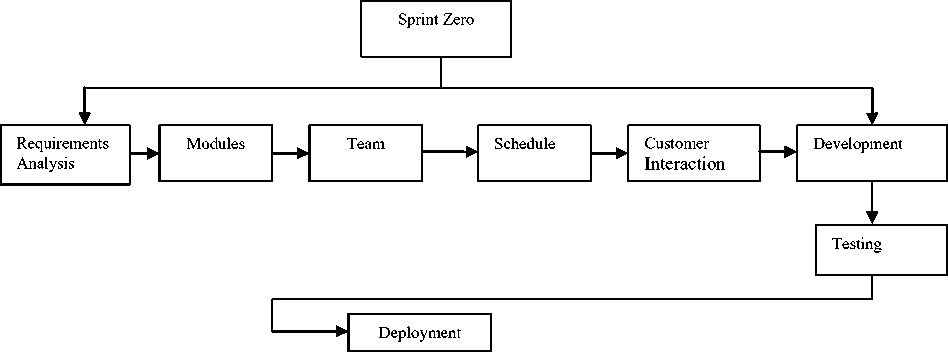
Fig. 2: Scrum Planning Phase with Implicit Coordination
An individual shows good performance but cannot coordinate with team members is useless in Scrum development environment. Scrum model emphasis on teamwork and coordination among team members. Team performance and coordination have significant effect in Scrum development to achieve common goals within time and budget. Implicit coordination among team members will help them to act intelligently in iterative incremental Scrum development environment. To deliver working module during planning phase of Scrum development has significant impact on Scrum project success. This working module is known as sprint zero or iteration zero. Sprint zero ensures that objectives of whole project are realistic and achievable. This reduces the project risk and helps to engage customer. On time of requirements gathering, the Scrum team passing through the stage of understanding project scope. Therefore to deliver working module under high workload is very difficult at this stage. Implicit coordination among team members and scrum master will help to achieve sprint zero successfully. Implicit coordination improves team ability to adjust properly with high workload and time critical situations.
The case in which Scrum team consists of highly skilled persons with different background experiences then this team will not be able to coordinate properly. The main reason is that they all are unaware of each other’s working style and development environment. Therefore this situation creates problem to coordinate with each other in time demand environment and ultimately reduce the productivity. Implicit coordination cannot perform well with such team members.
-
VI. Evaluation and Discussion
Scrum development strictly follows tight deadlines. During planning phase, Scrum team requires good coordination among themselves and with product owner. Because at this stage team passing through understanding scope of project while requirements are gathering. Therefore it is necessary for product owner that he clearly understands scope of project and maintains good coordination with development team. This helps to improve team performance with successful delivery of sprint zero. To deliver Sprint zero during planning phase helps to engage customers by increasing their trust on methodology. Sprint zero reduces project risk and increase team moral to work with Scrum model.
Scrum team with low coordination results to increase work pressure and low quality product. Because team focus on to meat timelines of changing requirement environment of Scrum model. At this stage, team members require to act intelligently to cope with changing requirements and critical timelines. Implicit coordination and collaboration helps to improve team performance as a whole to achieve common goals and meet customer demands with maximum quality product. Through implicit coordination development team utilize their skills in more manageable way to beat work pressure and critical timelines fear.
Scrum master coordination with development team and intelligence in such situations plays an important role for successful development of project by improving overall performance of Scrum development.
The results of cumulative evaluation of four main goals, against a research question, are represented in the form of frequency tables and charts. Final cumulative evaluation, of all goals, is presented after cumulative evaluation. This helps to understand the results in a more precise way.
G1: Lack of coordination, in planning phase of sprint zero, result, to cross estimated timeline for each sprint.
Figure 3 describes the cumulative evaluation of goal 1 against the six research questions that are surveyed.
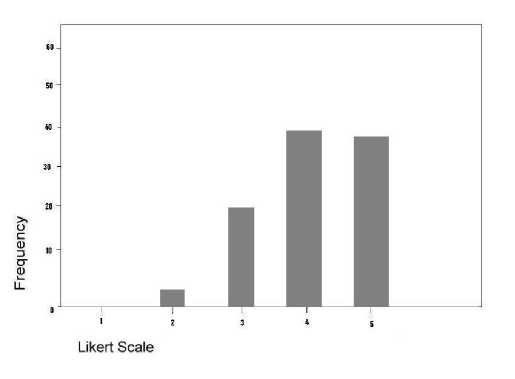
Fig. 3: Cumulative Evaluation of Goal 1 against Six Research Questions
Figure 3 shows that 39.4% of respondents are strongly agreed and 40% are agreed whereas 18.8% are neutral and 1.6% are disagreed to the questions against the goal 1.
G2: Implicit coordination shows significant improvement in team performance of Scrum model development.
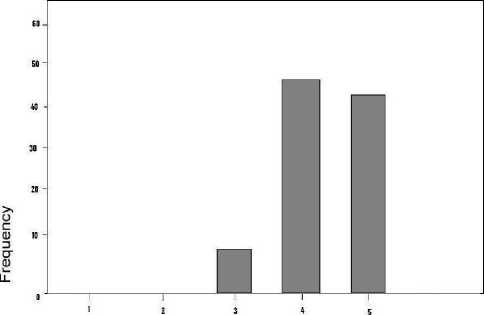
Likert Scale
Fig. 4: Cumulative Evaluation of Goal 2 against Six Research Questions
Figure 4 shows the cumulative evaluation of goal 2 against the research issues. The results from figure 4 are reflecting that 42.75% of the persons are in the favor of strongly agreed and 44.4% are agreed, 11.1% are neutral and 1.65% are disagreed to the questions related to the goal 2.
G3: Implicit coordination among development team and Scrum master shows significant improvement in management of sprint zero.
The cumulative evaluation of goal 3, against the research questions from question 13 to 17, is provided in figure 5.
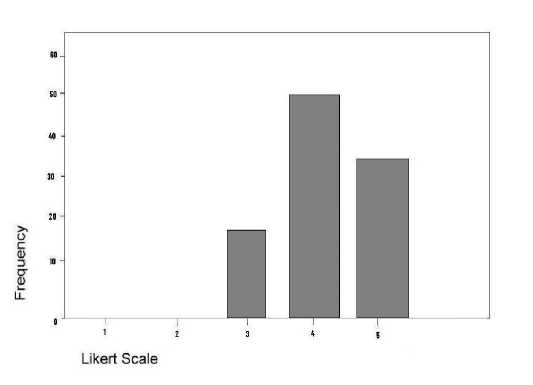
Fig. 5: Cumulative Evaluation of Goal 3 against Five Research Questions
The results show that 32.68% of the respondents are strongly agreed and 50.66% are agreed, 16.62% are neutral to goal 3.
G4: Skill set alone provides high performance .
Figure 6 shows the cumulative evaluation of goal 4.
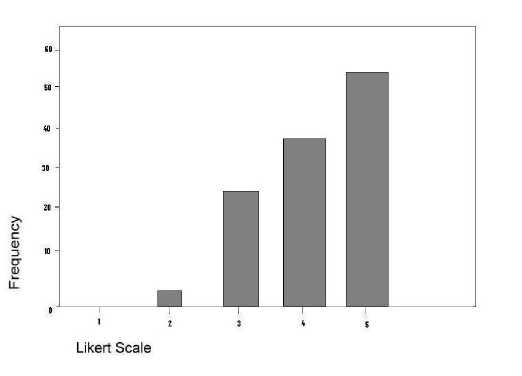
Fig. 6: Cumulative Evaluation of Goal 4 against Three Research Questions
According to the figure 6, 53.3% of the respondents are strongly agreed, 33.3% are agreed, 12.2% are neutral and only 1% are disagreed to the questions related to the goal 4.
Table 1 shows the final cumulative evaluation of all research goals against the research problem. It shows that 83.02% of the respondents are highly agreed to the problems related to Scrum development. 14.68% are neutral and only 1.06% are disagreed to the problems of the four research goals. Figure 7 presents the final cumulative evaluation of the four goals of this research.
Table 1: Final Cumulative Evaluation of All Goals against the Research Problem
|
Goals |
Strongly Disagree |
Disagree |
Neutral |
Agree |
Strongly Agree |
|
Cross the estimated Timelines (G1). |
0 |
1.6 |
18.8 |
40.0 |
39.4 |
|
Unable to meet Quality Demands (G2). |
0 |
1.65 |
11.1 |
44.4 |
42.75 |
|
Ability to take Quick decision (G3). |
0 |
0 |
16.62 |
50.66 |
32.68 |
|
Effect on Team performance (G4). |
0 |
1 |
12.2 |
33.3 |
53.3 |
|
Total |
0 |
4.25 |
58.72 |
168.36 |
168.13 |
|
Average |
0 |
1.06 |
14.68 |
42.09 |
42.03 |
The reliability of this research is measured by using Cronbach’s alpha and if the value of Cronbach’s alpha is closer to 1 that shows the significance of a research. Reliability value of the data gathered is .7034. Therefore, the reliability of this research is significant.
-
VII. Conclusion
The main focus of this research is to improve team performance through implicit coordination during planning phase of Scrum development. Because at this stage, Scrum team passing through high workload and critical timelines situation therefore lack of coordination ultimately affects the team performance.
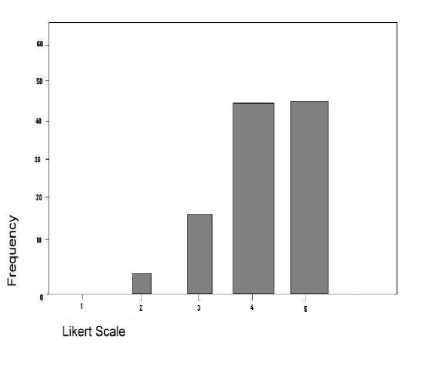
Fig. 7: Final Cumulative Evaluation of all Goals
The questionnaire survey has been conducted through local software industry to know the affect of implicit coordination on team performance. The results of survey, in Table 1, show significant response for the infusion of implicit coordination in Scrum planning phase for successful development of sprint zero. The results of survey lead to support the solution of the research problem that is taken up in this research.
The questionnaire consisted of four goals with maximum six research questions against each goal. This survey focused on the problem that lack of coordination in planning phase resulted to cross estimated timelines and team remains under high workload with low ability to take quick decision against changing requirements throughout Scrum development. Most of the software development companies accepted that they have to face these challenges during Scrum development. The survey has shown significant response to achieve these goals through implicit coordination. The results show that implicit coordination helps to improve team working ability under heavy workload by considering these goals. This research will help to Scrum development teams to achieve common goals with minimum negotiation and it will also improve the decision making skills of teams. Scrum development becomes more realistic by using implicit coordination rather than highly skilled team members with different background experiences.
Список литературы Proposal of Implicit Coordination Model for Performance Enhancement Using Sprint Zero
- Schatz B, Abdelshafi I. Primavera Gets Agile: A successful Transition to Agile Development, IEEE Software, 2005, 22, 36-42
- Noble D. A Cognitive Description of Collaboration and Coordination to Help Teams Identify and Fix Problems. In: Proceedings of the 7th International Command and Control Research Technology Symposium, Quebec, Canada,2002.1-14
- Espinosa J A, Kraur Robert E, Lerch Javier F, Slaughter S S, Herbsleb J D, Mockus A. Shared Mental Models and Coordination in Large-Scale, Distributed Software Development. In: Proceedings of the 22nd International Conference on Information System, New Orleans, Louisiana,2001.513- 517
- Roger S Pressman. Software Engineering, USA: McGraw Hill Press, 2011
- Williams L, Cockburn A. Agile software development: it's about feedback and change. 2003, Computer, 36(6), 39-43
- Isik M, Freek S, Gred Mayer H U. Coordination Without Negotiation in Teams of Heterogeneous Robots, Springer-Verlag, 2007, 355-362
- Petra B-S, Andre N, Kristina L, Susan M. Mental Models in Design Teams: a Valid Approach to Perform in Design Collaboration, CoDesign: International Journal of CoCreation in Design and the Arts, 2007, 3(1), 5-20
- Stone Nancy J, Posey Mathew. Understanding Coordination in Computer-Mediated Versus Face to Face Groups, Journal Computers in Human Behavior archive, 2008, 24(3), 827-851
- Serfaty D, Kleinman D L. Adaption Processes in Team Decision Making and Coordination. In: Proceedings of the IEEE International Conference on Systems, Man, and Cybernetics, Los Angeles, California,1990.394-295
- Lim B C, Klein K J. Team mental models and team performance: A field study of the effects of team mental model similarity and accuracy, USA: John Wiley, 2006
- Entine E E, Serfaty D. Adaptive Team Coordination, The journal of the Human Factors and Ergonomics Society,1999, 41, 312-325
- Pertti H L. James G M. Adaptive Coordination of A Learning Team, Management Science,1987,33(1), 107-123
- Pekka A, Outi S, Kainen S. Agile Software Development Methods: Reviews and Analysis. Finland: VTT Publications, 2002
- Sutherland J. Future of Scrum: Parallel Pipelining of Sprints in Complex Projects. In: Proceedings of Agile Conference, Denver, CO, USA,2005.90-102
- Begel A, Nagappa N. Usage and Perceptions of Agile Development in an Industrial Context: An Exploratory Study. In: Proceedings of the First International Symposium on Empirical Software Engineering and Measurement, Madrid, Spain,2007.255-264
- Beavers P A. Managing a Large “Agile” Software Engineering Organization. In: Proceedings of the AGILE Conference, Washington, DC, USA,2007.296–303
- Edwards M D. Overhauling a Failed Project Using Out of Box Scrum. In Proceedings of Agile Scrum 2007 Gathering, London, England,2007.413-416
- Singh M. U-Scrum: An Agile Methodology for Promoting Usability. In: Proceedings of the AGILE Conference, Chicago, USA,2009,555-560
- Nils Brede Moe, Torgeir Dingsøyr, Tore Dybå. Understanding Self-Organizing Teams in Agile Software Development. In: Proceedings of 19th Australian Conference on Software Engineering, Perth, Australia,2008.76-85
- Sutherland J. Agile Development: Lesson Learned From the First Scrum, 2004
- Jakobsen C R, Johnson K A. Mature Agile with a Twist of CMMI. In: Proceedings of the AGILE '08. Conference, Toronto, Canada,2008.212-217

